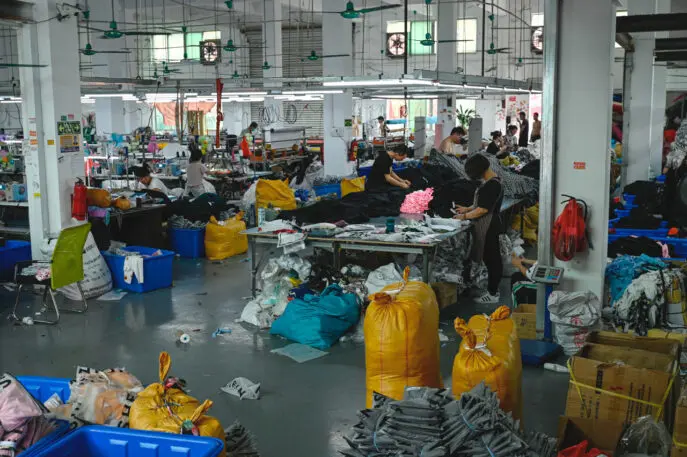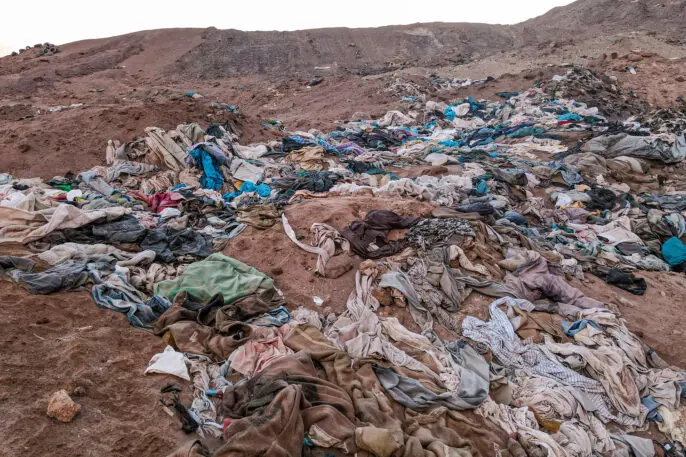A decade ago, environmental activists, journalists, and consumers began attacking H&M and Zara for their business practices. These brands pioneered fast fashion, which involves churning out ultra-trendy outfits at rock-bottom prices. In the process, they turned clothes into cheap, disposable items. It’s now clear that this approach is deeply unethical because it accelerates climate change and exploits garment workers.
H&M and Zara got the message and took measures to move towards more sustainable practices, like using better materials and paying factories more. But in the background, a bigger threat was looming.
The Chinese startup Shein launched in 2012 and started making clothes at lower prices and at a higher velocity than anything we’ve seen before, dropping up to 10,000 new items on its website every day. Shein now accounts for half of all fast-fashion sales (more than H&M and Zara combined) and is valued at $66 billion. And last week, news broke that Shein has filed for an IPO in the United States. At the same time, reports allege that Shein’s ultra-low prices are made possible by forced labor and human rights violations.
In the face of such a monstrous new giant in the apparel industry, it’s easy to give up hope that we can clean up the fashion industry and avert the looming climate catastrophe. But some aren’t giving up. The resale platforms Vestiaire Collective and ThredUp, for instance, are leading the charge in the fight against fast fashion. Both are vocally taking aim at Shein in their marketing campaigns, articulating exactly how much damage it is inflicting on people and the planet.

While these tactics don’t have an immediate impact on Shein’s bottom line, these companies believe that it is worth playing the long game by educating the next generation of consumers about why fast fashion is so destructive, and how to shop more ethically.
Resale vs. Fast Fashion
Last summer, Shein opened a pop-up in San Francisco, giving consumers a rare opportunity to shop in person. ThredUp, which is headquartered in Oakland, took notice and went on the attack. It sent text messages to its Bay Area subscribers, asking them to boycott Shein’s pop-up, and offering a 40% discount and free shipping on ThredUp.
It makes a lot of sense for resale platforms to take aim at fast fashion. These companies buy and sell secondhand fashion, allowing consumers to buy products at lower prices than they would be firsthand. Since consumers of fast fashion tend to be motivated by low prices, resale sites can compete directly with brands like Shein. And the resale sector is growing quickly, expected to double in size by 2027 to $350 billion.
One way that resale platforms like ThredUp and Vestiaire Collective entice consumers to shop with them is by highlighting how much more sustainable it is to buy used products rather than new ones. Making a new garment requires extracting raw materials, shipping them around the world, and sewing them in a factory, all of which generates greenhouse gases. Buying a used garment means avoiding nearly all of this negative impact. Even when you include the emissions required to ship a secondhand item to a customer, scientific research has found that used clothing has a significantly lower environmental footprint.
Erin Wallace, ThredUp’s VP of integrated marketing, told me last year that taking on Shein was a first for ThredUp. The boycott came with some risk: It could have made some of their customers feel bad for buying products from Shein. But Wallace said that Shein is now turbocharging the fast-fashion industry and creating such an enormous volume of clothes at such a fast pace that it is worth speaking up about it. “Our goal is to create a future in which we are reusing more clothes than we are producing,” Wallace said. “When you have players like Shein, that goal seems farther and farther away. It is encouraging overconsumption and disposable fashion on a whole other scale.”

Banning Fast Fashion
Vestiaire Collective took a stand against Shein by banning it from its platform last year. Overnight, sellers that had listed Shein products found that their listings were taken down. Much like with ThredUp, this moved risked angering their customers. “We felt it was important to take a stand and raise awareness,” says Samina Virk, the North America CEO of Vestiaire Collective.
Shein isn’t the only brand Vestiaire kicked off its website. It is taking on the entire fast-fashion industry, starting with defining what fast fashion is in the first place with the help of industry experts. This is important because may consumers don’t really understand what fast fashion is; they often think of brands like H&M that pioneered the model. Virk points out that fast fashion isn’t just about low prices and cheap quality. It’s also about brands constantly putting out new products, then promoting these goods so that consumers want to buy them.

Using this criteria, Vestiaire banned 33 fast-fashion brands last year, including ASOS, Fashion Nova, and Forever 21, and has added another 30 brands to the list this year, including Zara, H&M, Gap, Benetton, and Urban Outfitters. It plans to add more brands next year. Virk says the goal of this progressively larger ban is to be able to take the time to educate consumers about how to shop more responsibly.
“I don’t think anybody’s intentionally buying fast fashion with a negative environmental impact in mind,” she says. “So there needs to be a lot of education. We’re encouraging people to buy with an eye towards longevity and quality, so they can hold on to a piece for longer or fetch a better price on a resale site.”
ThredUp, for its part, still sells fast-fashion brands because it wants to keep these products out of landfills. But it does not pay sellers for items from Shein and other low quality brands, nor does it make any money from selling these brands. (The amount that buyers pay just covers the shipping and logistical costs.) In other words, people can essentially donate their old fast-fashion clothes to ThredUp, which will find people to buy them. “We sell (fast fashion) because it is the right thing to do for the planet,” Wallace tells me, by email. “Making a profit on these items is not our goal.”

How To Kill Off Shein
These resale platforms are under no illusion that their campaigns against Shein will topple the company. But by using their marketing to highlight the problems with fast fashion, they believe they can slowly change the culture around how we consume clothing, which might slowly change people’s shopping behaviors. “Our hope for the future is that the fashion industry ultimately produces less and reuses more,” says Wallace.
Virk believes that governments will play a key role in helping to slow Shein’s rise. As a company based in France, Vestiaire Collective is closely following the raft of regulations that are on the horizon in Europe. Soon, all physical goods sold in the EU will have to meet requirements around durability, reusability, and repairability, among a long list of other rules. This will directly impact Shein’s ability to sell to European consumers, unless it radically changes the way it designs and manufactures products.
In the U.S., there has been less of a push to regulate fashion brands. But this past April, two members of Congress asked the Securities and Exchange Commission to require Shein to certify through an independent party that it does not use forced labor as a condition for filing for an IPO. But if Shein does go public, it will have to open its books and share details about its internal workings, which could lead to more scrutiny and legislations.
In the end, tackling fast fashion is a long game. But Wallace believes we can eventually get there. “It’s going to take time to see this shift across the industry,” says Wallace. “It will need to be a collaborative effort with support from shoppers, the government, and retailers.”
Recognize your brand’s excellence by applying to this year’s Brands That Matter Awards before the early-rate deadline, May 3.
